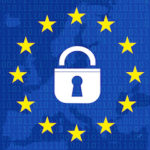How should you plan for the possibility of something like a bombing or shooting? What’s too little, too much, or just enough? In Convene’s recent survey of meeting professionals about event security, only 11 percent of respondents said they’ve used metal detectors or bag searchers at their meetings, but 77 percent said they would consider it. Among the 22 percent who said they would never consider it, reasons varied. “It is not a concern based on the attendees and the city where we hold meetings,” one respondent wrote. For another, “Our attendees would be offended and put off by it.” And for another, it had to do with “the reliability of the detectors. In addition, it is more efficient to spend time planning ahead and evaluating if you think you might have a threat due to attendees, speakers, or the topic of the meeting.”
The meeting professionals we talked to addressed two fundamental components that should be included in a security-response program:
1. A BASIC LEVEL OF SECURITY
This might mean some combination of metal detectors, X-ray machines, bag searches, and bag checks. Depending on the destina-tion, the venue, the topic of the meeting, the speakers, and the audience, attendees will be reassured to know you’re being realistic about potential threats. “After the recent incident this year, both national and local authorities have been determinedly taking all the precautions for our visitors coming to Istanbul,” said Istanbul CVB’s Ozgul Ozkan Yavuz. “In all public areas including metro stations, squares, touristic areas, and airports, security has been vigi-lantly tightened. An example — the security level at Atatürk International Airport has been raised to the highest level by placing an X-ray control for cars at the entrance.”
Likewise, “After the Paris attacks, event and meeting professionals have stepped up efforts to provide heightened security for all attendees — exhibitors, visitors, delegates, spectators, sportspeople, journalists, employees, etc.,” said Viparis’ Michel Dessolain. “Security has been reinforced at Viparis venues. Every single item enter-ing a venue, whether logistical equipment or trade-show materials, is checked by security staff. Viparis is liaising with the French authorities to ensure the security of their clients and staff.”
Just be prepared — per our survey results — for those sorts of visible security measures to meet with resistance. Not long after the Boston Marathon bombings, James Schultze, CMP, was working on a private event for a client, and suggested doing bag checks. The client balked, telling Schultze: “We don’t want to do that. It looks bad. People will be offended if we ask to check their bags.”
2. COMMUNICATION
This applies to several different dynamics. First, what do you tell attendees about your event security? It can be a fine line between reassuring people that you’re looking out for them and sparking a panic — to say nothing of giving away your secrets. “We don’t let everyone know all of our security procedures [for the Wash-ington Auto Show], of course, because you don’t want to reveal that,” said Yoffe Exposition Services’ Robert Yoffe. “But we do on our website tell people that there is a bag check. We talk about the things we’re looking for. We’re not looking to confiscate a bottle of water or a sandwich or cigarettes. It’s not our goal. Our goal is just to make sure that everyone is safe.”
Second, how will you communicate with your staff in the event of an active threat? This is as much about chain of command as anything: who is notified when some-thing happens, who is authorized to direct a response, and so on. “That includes the spokesperson aspect and critical phone contacts,” said attorney Barbara Dunn O’Neal. “If there was an emergency, where would we go? Where can we marshal our-selves in the event we had to evacuate?”
Third, do you know whom to notify at the venue? “I always recommend understand-ing the venue’s level of security and their response, because in many cases they’re going to be the ones there,” said Attainium’s Bob Mellinger. “If you look at who’s carrying a gun or who’s there to protect [you], odds are it’s going to be the security people within the venue you’re in. To me, the first thing to evaluate is, what are the communication paths between you and them? Make sure that you’ve got someone you can call in the event that something goes down.”
For more on event security, see our December CMP Series story, “Unclear and Present Danger.”



